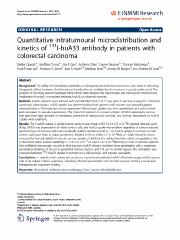Please use this identifier to cite or link to this item:
https://ahro.austin.org.au/austinjspui/handle/1/12292Full metadata record
| DC Field | Value | Language |
|---|---|---|
| dc.contributor.author | Ciprotti, Marika | - |
| dc.contributor.author | Chong, Geoffrey | - |
| dc.contributor.author | Gan, Hui K | - |
| dc.contributor.author | Chan, Anthony | - |
| dc.contributor.author | Murone, Carmel | - |
| dc.contributor.author | MacGregor, Duncan | - |
| dc.contributor.author | Lee, Fook-Thean | - |
| dc.contributor.author | Johns, Terrance G | - |
| dc.contributor.author | Heath, Joan K | - |
| dc.contributor.author | Ernst, Matthias | - |
| dc.contributor.author | Burgess, Antony W | - |
| dc.contributor.author | Scott, Andrew M | - |
| dc.date.accessioned | 2015-05-16T01:57:18Z | |
| dc.date.available | 2015-05-16T01:57:18Z | |
| dc.date.issued | 2014-05-30 | - |
| dc.identifier.citation | Ejnmmi Research 2014; 4(): 22 | en |
| dc.identifier.other | PUBMED | en |
| dc.identifier.uri | https://ahro.austin.org.au/austinjspui/handle/1/12292 | en |
| dc.description.abstract | The ability of recombinant antibodies to adequately penetrate into tumours is a key factor in achieving therapeutic effect; however, the behaviour of antibodies at a cellular level in tumours is poorly understood. The purpose of this study was to investigate those factors that influence the macroscopic and microscopic intratumoural distribution of an IgG1-humanized antibody, huA33, in colorectal tumours.Twelve patients were infused with radiolabelled huA33 at 7 days prior to elective surgery for colorectal carcinoma. Macroscopic huA33 uptake was determined by both gamma well counter and autoradiography measurements of the resected tumour specimens. Microscopic uptake was then quantitated at a cellular level and compared to vascular penetrance. The impact of variation in tumour antigen (GPA33) expression, tumour size, specimen type (primary vs metastatic), presence of macroscopic necrosis, and tumour vasculature on huA33 uptake were examined.The I-huA33 uptake in whole tumour sections was (mean ± SD) 5.13 ± 2.71 × 10(-3)% injected dose per gram (ID/g). GPA33 was expressed in all viable tumour cells, and huA33 uptake was excellent regardless of tumour size and specimen type. In tumours with macroscopically evident central necrosis (n = 5), huA33 uptake in tumour necrotic centres was lower than in viable peripheries (0.606 ± 0.493 vs 2.98 ± 2.17 × 10(-3)%ID, p = 0.06). However, when corrected for low cell viability in necrotic centres, uptake of huA33 at the cellular level was highly comparable to that in the more viable tumour periphery (7.10 ± 5.10 × 10(-9) vs 3.82 ± 3.67 × 10(-9)%ID/cell, p = 0.4). In the five patients who exhibited macroscopic necrosis in their tumours, huA33 showed excellent tissue penetration, with a maximum penetration distance of 26 μm in peripheral tumour regions and 118 μm in central regions. No correlation was observed between (131)I-huA33 uptake in tumour on a cellular basis and tumour vascularity.In patients with colorectal carcinoma, monoclonal antibody huA33 effectively targets viable tumour cells in all cellular milieus examined, including effective penetration into necrotic tumour centres, a novel and therapeutically important finding. | en |
| dc.language.iso | en | en |
| dc.subject.other | Colon cancer | en |
| dc.subject.other | Immunotherapy | en |
| dc.subject.other | Microdistribution | en |
| dc.subject.other | Monoclonal antibody | en |
| dc.title | Quantitative intratumoural microdistribution and kinetics of (131)I-huA33 antibody in patients with colorectal carcinoma. | en |
| dc.type | Journal Article | en |
| dc.identifier.journaltitle | EJNMMI research | en |
| dc.identifier.affiliation | Ludwig Institute for Cancer Research, Austin Health, Melbourne 3084, Australia | en |
| dc.identifier.affiliation | Anatomical Pathology | en |
| dc.identifier.affiliation | Monash Institute for Medical Research, Melbourne 3168, Australia | en |
| dc.identifier.affiliation | Walter and Eliza Hall Institute of Medical Research, Melbourne 3052, Australia | en |
| dc.identifier.affiliation | Molecular Imaging and Therapy | en |
| dc.identifier.doi | 10.1186/s13550-014-0022-x | en |
| dc.description.pages | 22 | en |
| dc.relation.url | https://pubmed.ncbi.nlm.nih.gov/24995151 | en |
| dc.type.content | Text | en |
| dc.type.austin | Journal Article | en |
| local.name.researcher | Chong, Geoffrey | |
| item.openairecristype | http://purl.org/coar/resource_type/c_18cf | - |
| item.fulltext | With Fulltext | - |
| item.grantfulltext | open | - |
| item.languageiso639-1 | en | - |
| item.openairetype | Journal Article | - |
| item.cerifentitytype | Publications | - |
| crisitem.author.dept | Olivia Newton-John Cancer Wellness and Research Centre | - |
| crisitem.author.dept | Medical Oncology | - |
| crisitem.author.dept | Olivia Newton-John Cancer Wellness and Research Centre | - |
| crisitem.author.dept | Olivia Newton-John Cancer Research Institute | - |
| crisitem.author.dept | Olivia Newton-John Cancer Research Institute | - |
| crisitem.author.dept | Molecular Imaging and Therapy | - |
| crisitem.author.dept | Olivia Newton-John Cancer Research Institute | - |
| Appears in Collections: | Journal articles | |
Files in This Item:
| File | Description | Size | Format | |
|---|---|---|---|---|
| 24995151.pdf | 3.58 MB | Adobe PDF |  View/Open |
Page view(s)
62
checked on Feb 22, 2025
Download(s)
142
checked on Feb 22, 2025
Google ScholarTM
Check
Items in AHRO are protected by copyright, with all rights reserved, unless otherwise indicated.
